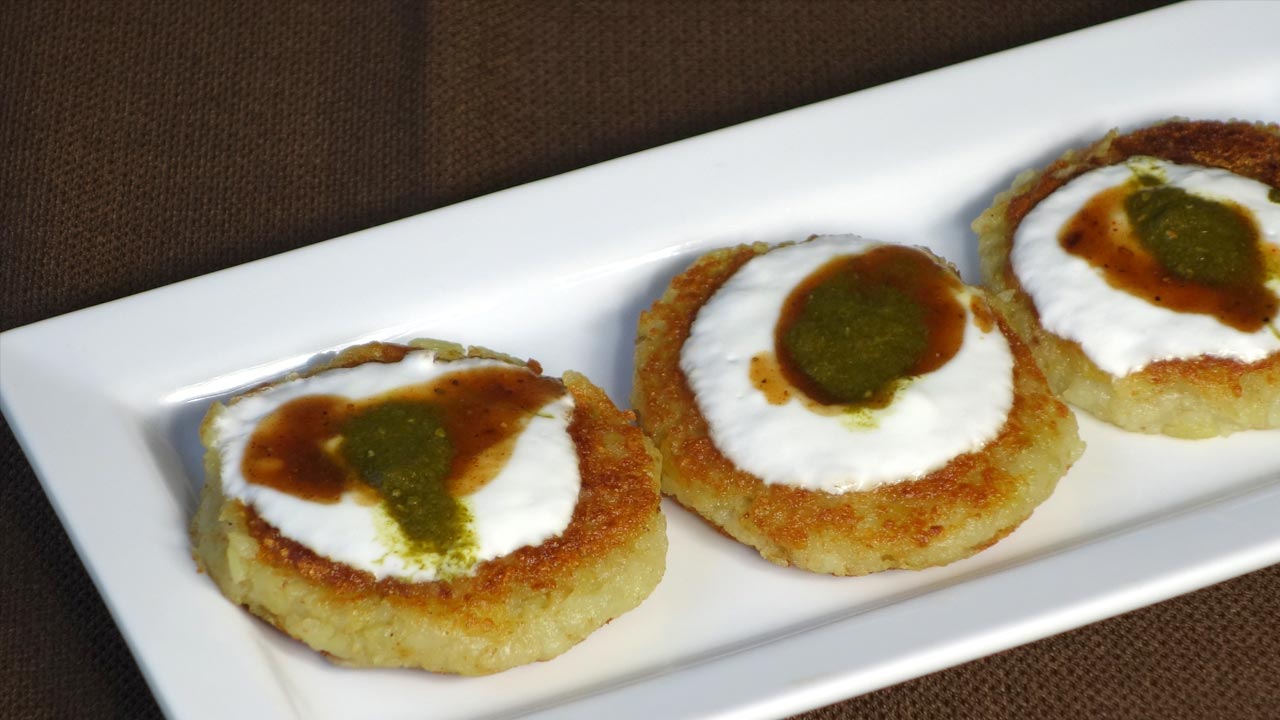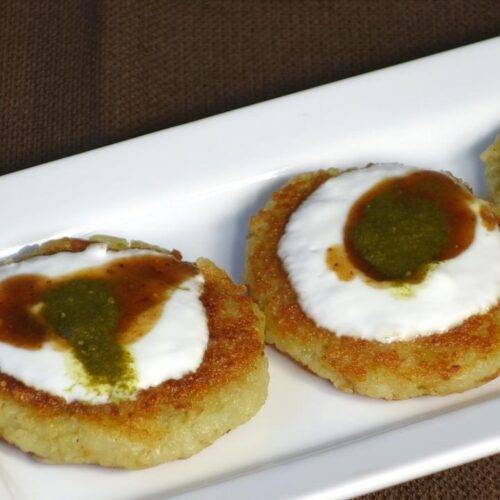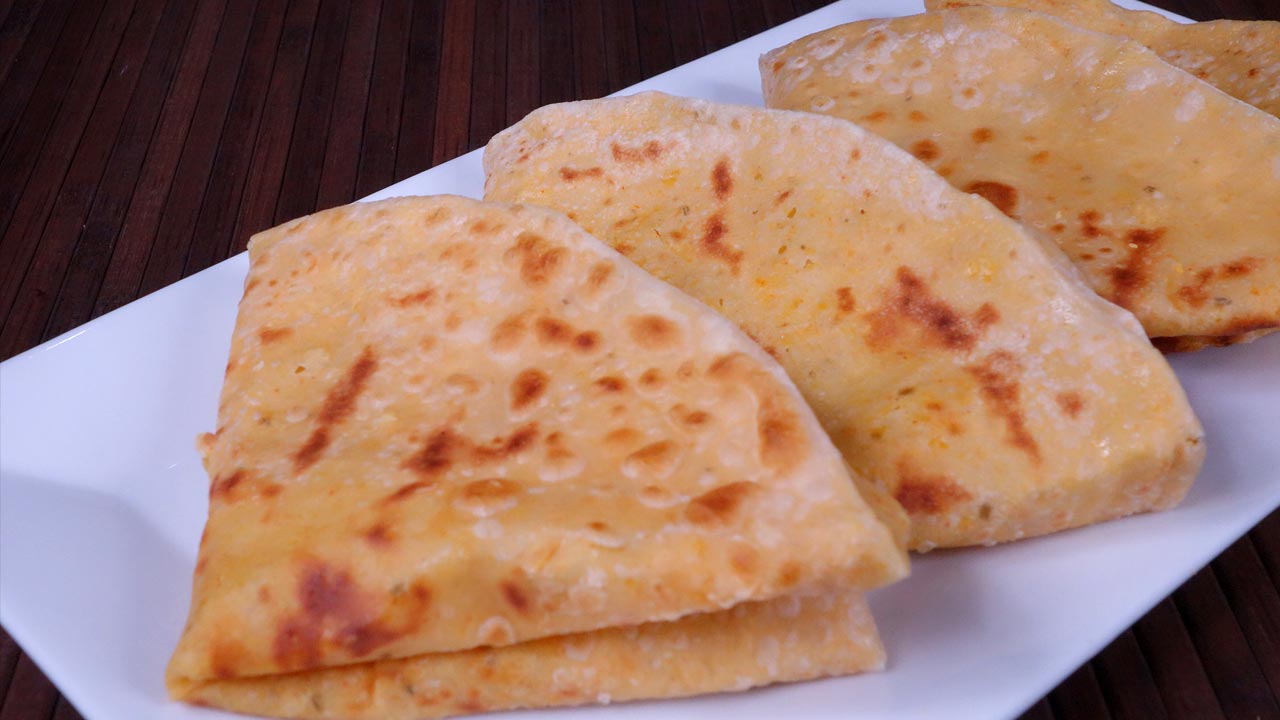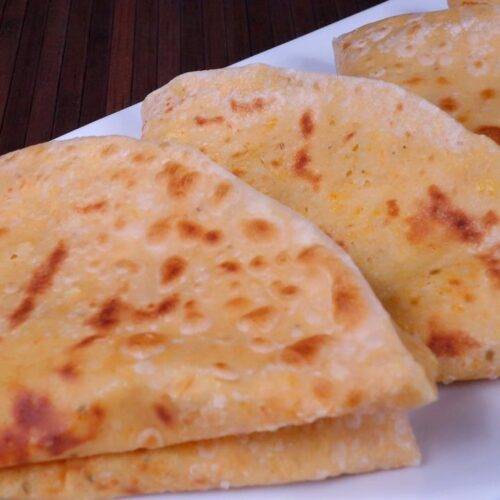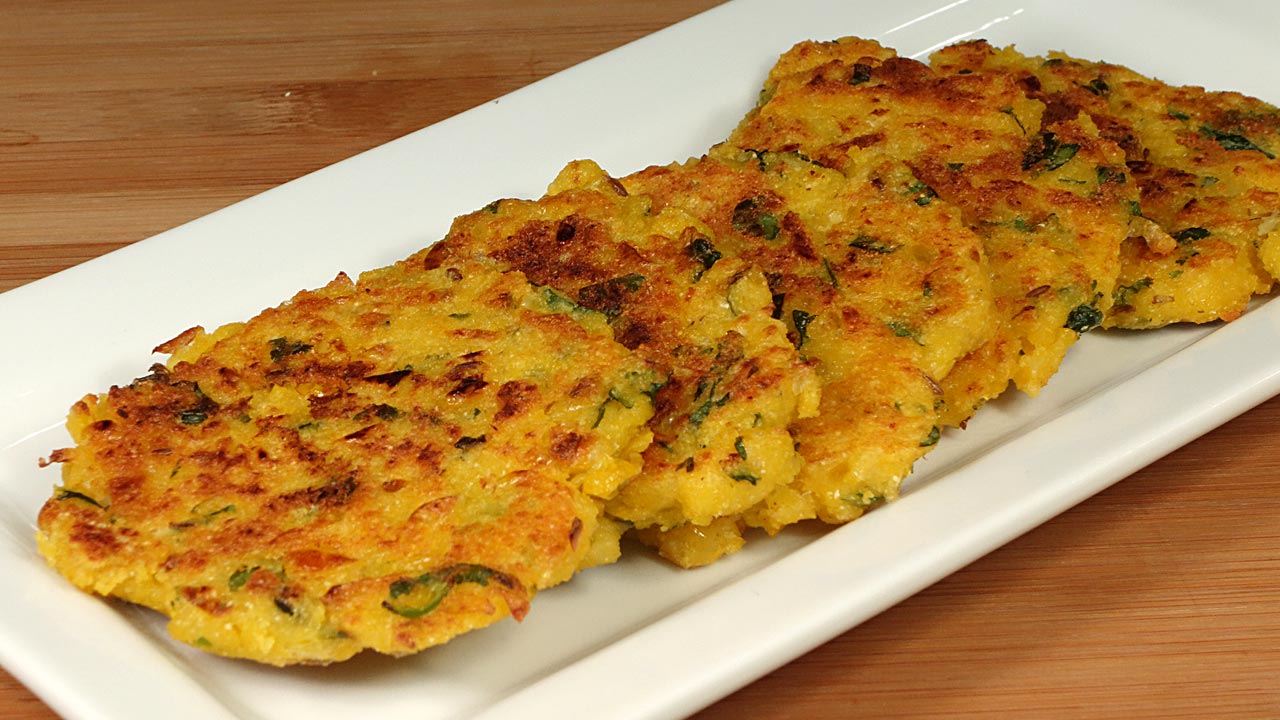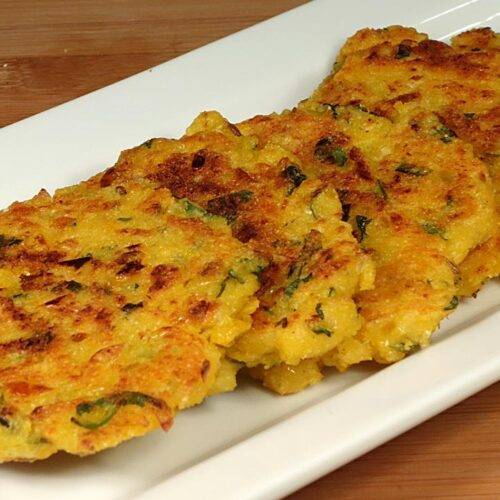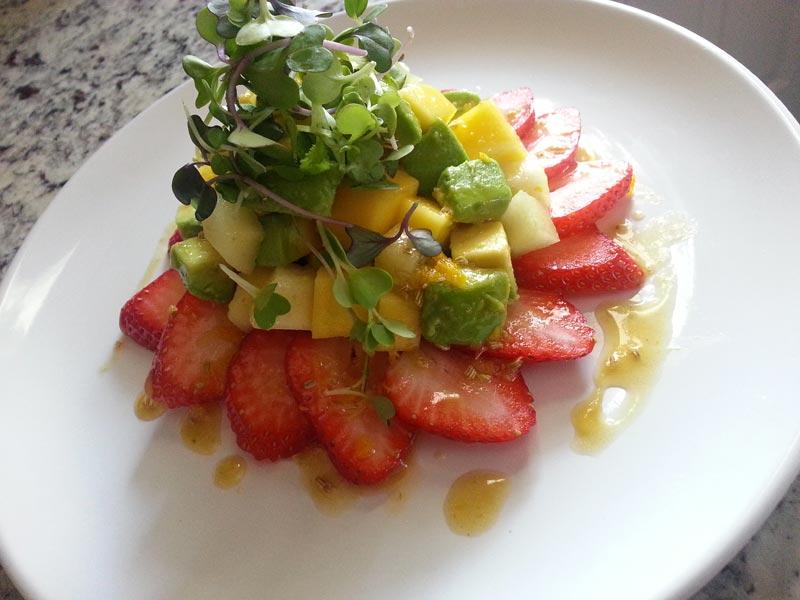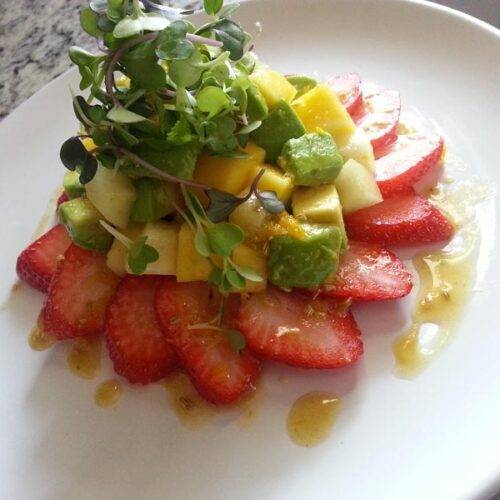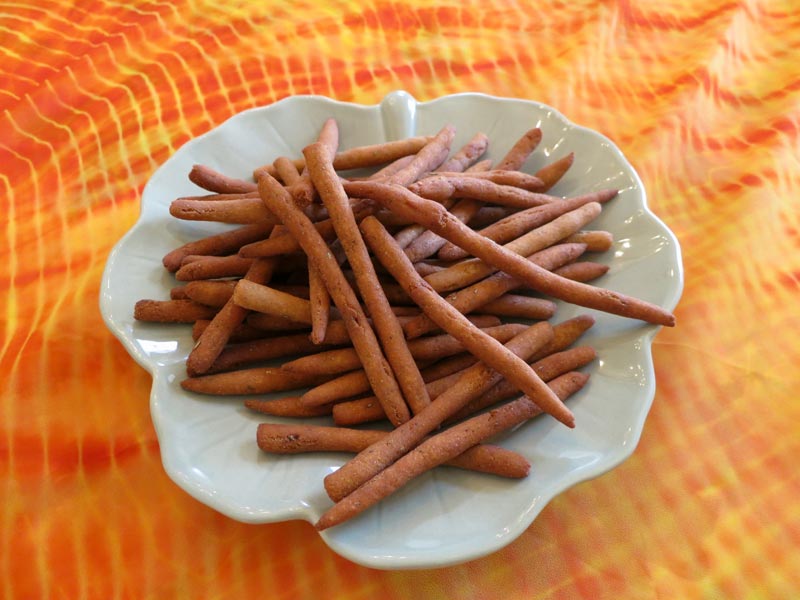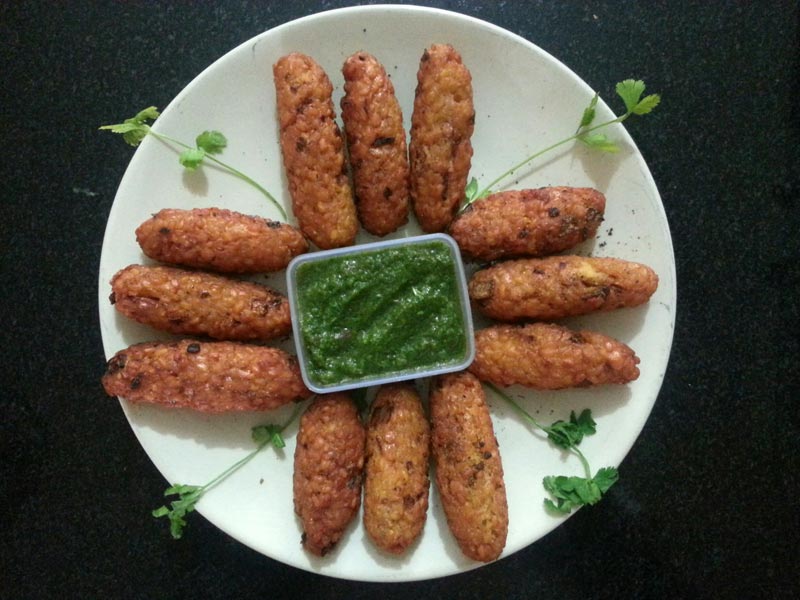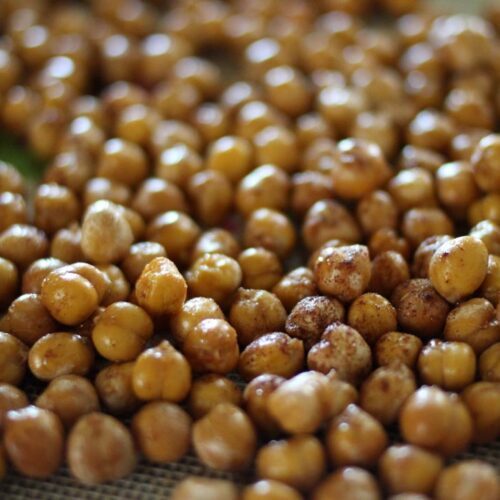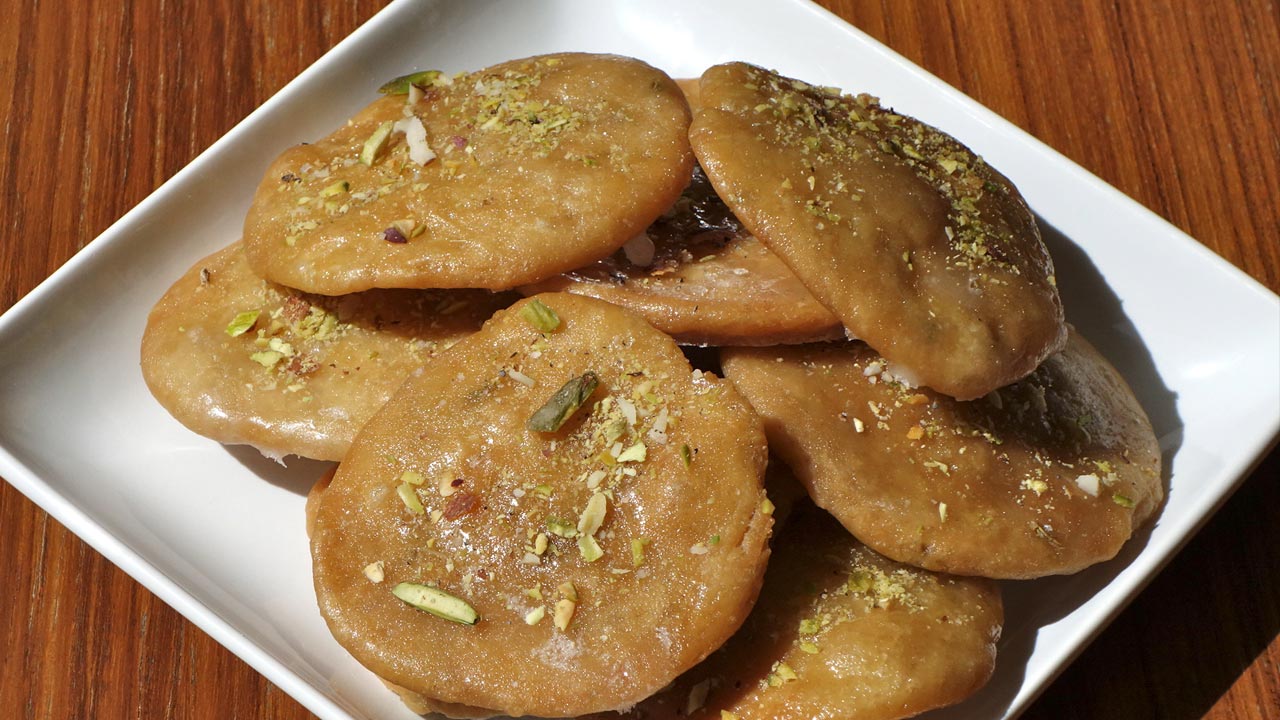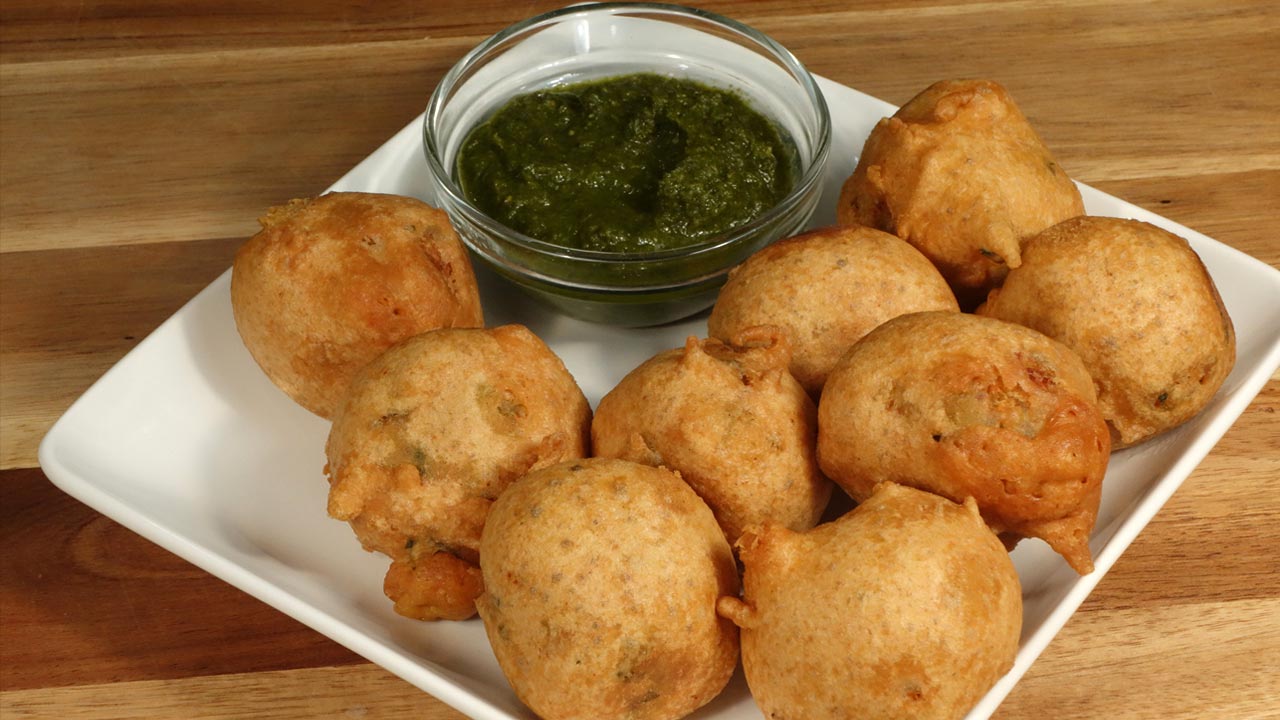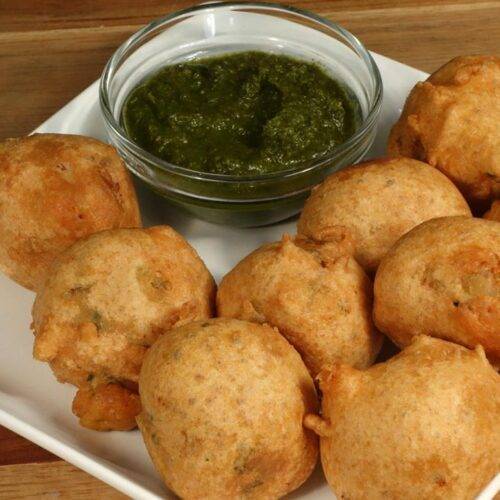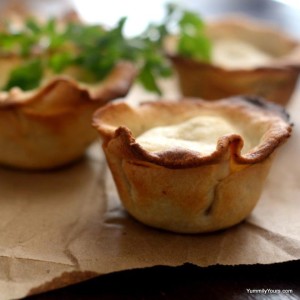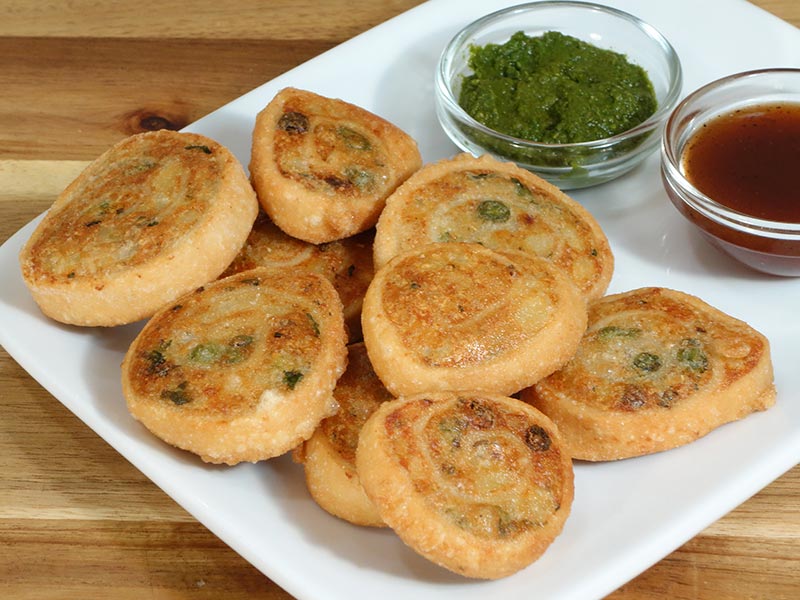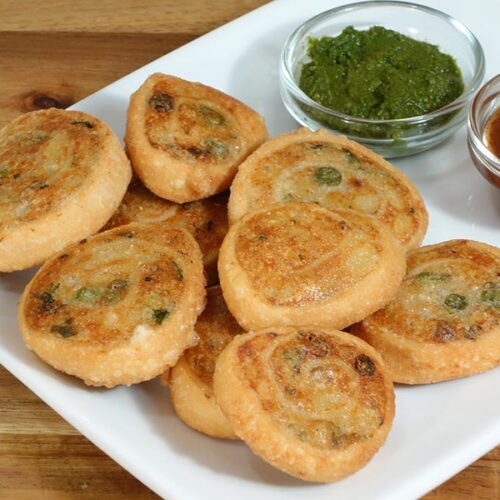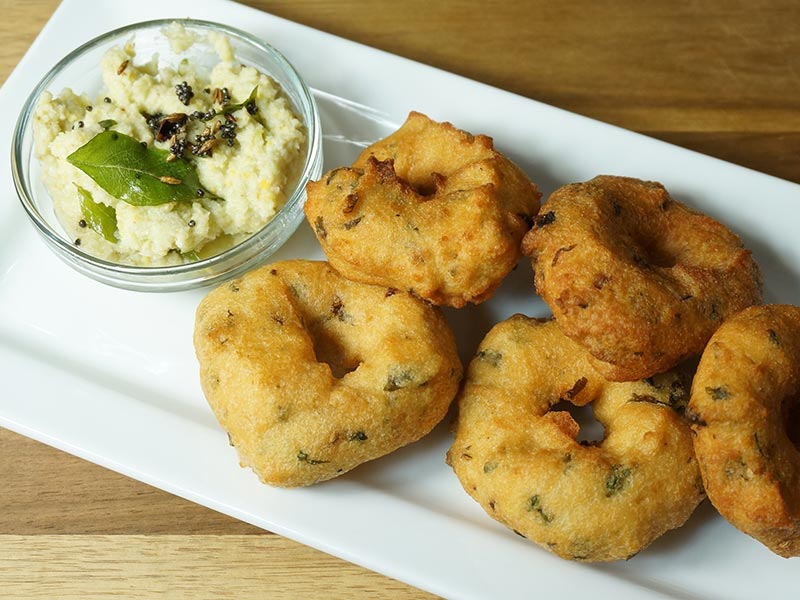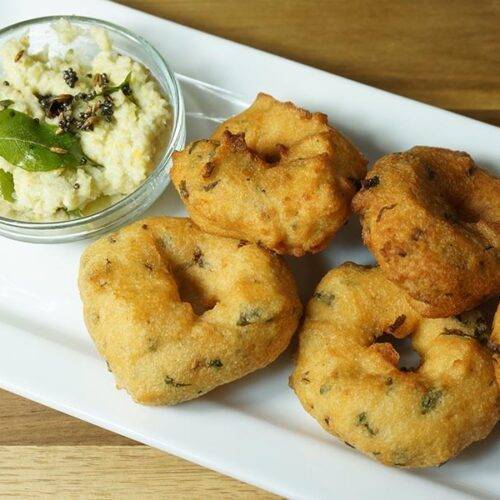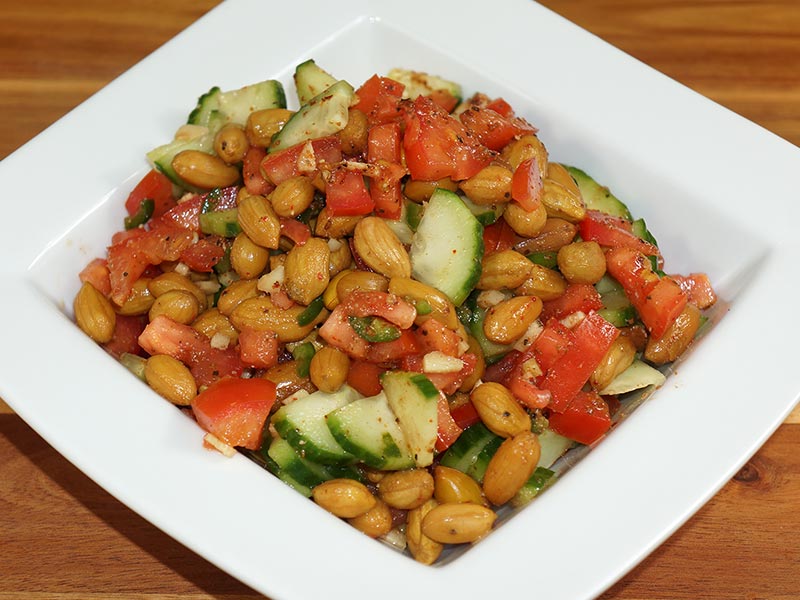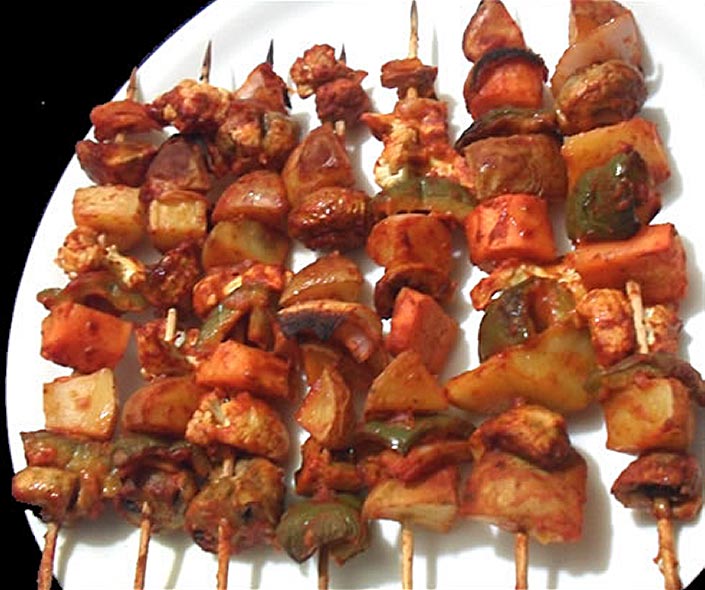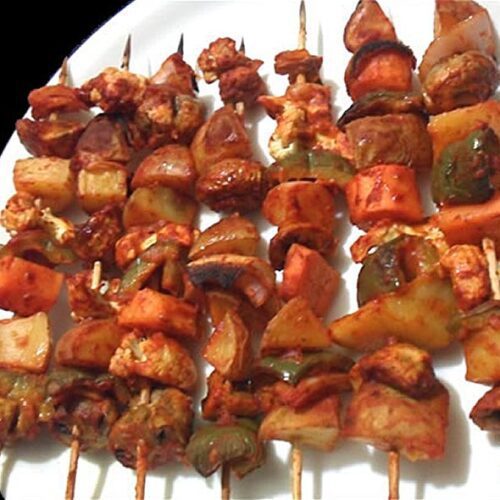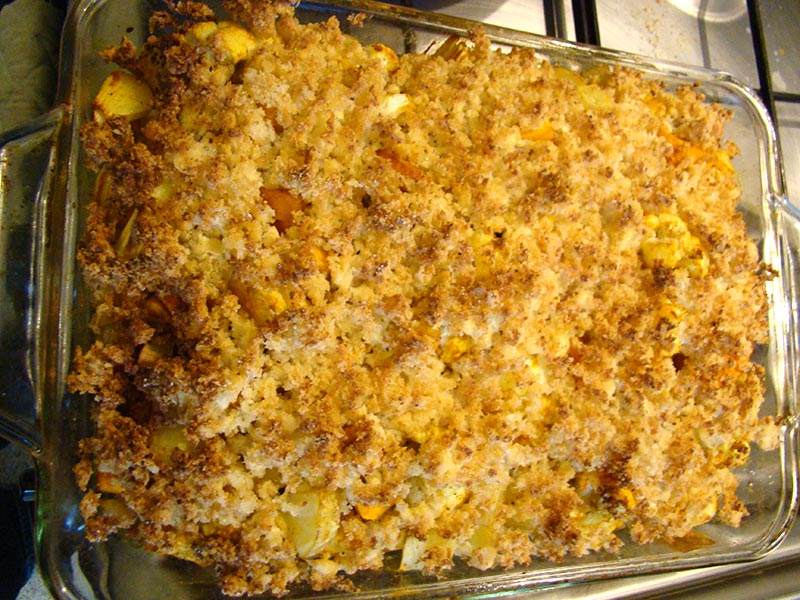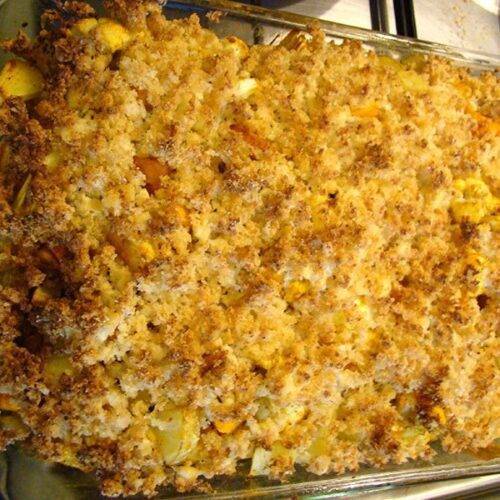Aloo Tikki (Potato Patties)
Ingredients
- 3 medium size potatoes boiled and shredded, this will make 2 cups of shredded potato
- 2 tablespoon bread crumbs
- 1 teaspoon salt
- Oil for cooking
for Filling
- 1/3 cup green peas boiled and drained
- 1 teaspoon chopped ginger
- 1 tablespoon green chili minced
- 1 tablespoon minced cilantro (hara dhania)
- ¼ teaspoon salt
- 1 teaspoon oil
for Serving
- About 1 cup yogurt whipped
- ¼ cup cilantro chutney
- ¼ cup tamarind chutney
Instructions
Making Filling
- Boil and drain the water from the peas and lightly mash.
- Heat the oil in a small pan over medium heat; add all the filling ingredients, stir fry for about two minutes. Keep the filling little moist. Set aside.
Making tikkis
- Add the salt and bread crumb into the potatoes and knead to make the dough.
- Divide the potatoes into 8 equal parts.
- Takes one part of the potato dough, make a ball and flatten over the oiled palm. Put about 1 teaspoon of filling in the center and wrap around with potato. Lightly flatten the filled balls to patties. Make all the patties.
- Heat non stick heavy skillet on medium high heat, generously greased the skillet. Place the tikkies on the skillet, making sure they are not touching each other and has some space all around. Oil the tikkies from the top.
- Cook them for about 1 minute and turn them over, tikkies should be light golden brown. Oil the tikkies from the top and lightly press with spatula.
- Turn the tikkies 3-4 times as needed to make sure tikkies are nice and crispy. Brush the oil lightly every time when you turn the tikkies over and also press with spatula.
- Aloo tikkies taste best when they are served right from over the skillet.
- You can prepare them in advance, up to five steps and brown them just before serving.
- Tikkies are served along with tamarind chutney, cilantro chutney and yogurt. You can also serve them with spicy chole.
Aloo Tikki: A Delectable Indian Potato Patties Recipe
In this aloo tikki recipe, we delve into the art of creating these beloved potato patties, a staple in Indian cuisine. These aloo tikkis are not only flavorful but also versatile, making them perfect for various dishes like aloo tikki chaat. Aloo Tiki, a delightful vegan appetizer inspired by street food recipes. If you’re craving a delightful snack or appetizer, look no further than this tikki aloo recipe.
Preparation: Crafting the Perfect Aloo Tikki
To start this aloo tikki recipe, begin by boiling potatoes until they are tender. Once cooled, peel and mash them thoroughly. Now, let’s infuse these mashed potatoes with flavor. Add green chili, ginger, salt, cumin seeds, mango powder, and garam masala to the mashed potatoes. Mix these ingredients well, ensuring they are evenly distributed, creating the base for our aloo tikkis.
Cooking: Shaping and Pan-Frying the Aloo Tikki
Now comes the fun part – shaping the aloo tikkis! Take a portion of the potato mixture and roll it into a ball, then gently flatten it to form a patty. Repeat this process until all the mixture is used. Heat oil in a skillet over medium heat. Once hot, carefully place the aloo tikkis in the skillet, ensuring they don’t overlap. Cook each side until golden brown and crisp, creating a delightful texture that enhances the flavor of the tikki aloo.
Serving: Enjoying Aloo Tikki in Various Forms
Now that your aloo tikkis are ready, it’s time to enjoy them in different ways. One popular option is aloo tikki chaat, where the tikki aloo is topped with a medley of chutneys, yogurt, and spices, creating a burst of flavors with every bite. You can also serve aloo tikkis with a side of mint chutney or tamarind chutney for a refreshing twist. Whether enjoyed as a snack, appetizer, or part of a meal, these aloo tikkis are sure to delight your taste buds.
Tips for Perfect Aloo Tikki:
- Use starchy potatoes: Opt for potatoes like russets or Yukon Gold, as they have a higher starch content, resulting in fluffier aloo tikkis.
- Keep the oil hot: Ensure the oil is sufficiently hot before frying the aloo tikkis to achieve a crispy exterior.
- Don’t overcrowd the skillet: Cook the tikki aloo in batches, giving them enough space in the skillet to fry evenly.
- Add breadcrumbs: If the potato mixture feels too wet, incorporate breadcrumbs to help bind it together.
Variations of Aloo Tikki:
- Paneer-stuffed Aloo Tikki: Elevate your aloo tikki experience by adding a layer of paneer stuffing before shaping and frying them.
- Vegetable-loaded Aloo Tikki: Mix finely chopped vegetables like carrots, peas, and bell peppers into the potato mixture for added texture and flavor.
- Spicy Aloo Tikki: Increase the heat by adding extra green chilies or a dash of red chili powder to the potato mixture.
Benefits of Aloo Tikki:
- Rich in carbohydrates: Potatoes are a great source of carbohydrates, providing energy to fuel your day.
- Versatile: Aloo tikkis can be enjoyed on their own, as part of a meal, or as a base for various chaat dishes, offering endless culinary possibilities.
- Comfort food: The warm and comforting flavors of aloo tikkis make them a favorite comfort food for many.
FAQs about Aloo Tikki:
Q: Can I make aloo tikkis ahead of time?
A: Yes, you can prepare the potato mixture and shape the aloo tikkis in advance. Store them in the refrigerator until ready to fry.
Q: Can I bake aloo tikkis instead of frying them?
A: While frying gives aloo tikkis their characteristic crispiness, you can bake them in the oven for a healthier alternative. Brush them with oil and bake at 400°F (200°C) until golden brown.
Q: Are aloo tikkis gluten-free?
A: Yes, aloo tikkis are naturally gluten-free. However, if you’re adding breadcrumbs for binding, ensure they are gluten-free certified.
Other Recipes on Manjula’s Kitchen
If you’re looking to explore more Indian recipes, appetizers, beverages, and desserts, be sure to check out the following links on Manjula’s Kitchen. Here are some links to recipes on Manjula’s Kitchen official website:
Chana Chaat (Spicy Chickpea Salad) Recipe
Pav Bhaji (Spicy Vegetable Hash with Buns) Recipe
Raj Kachori (Crunchy Chaat) Recipe
These recipes should offer you a flavorful experience straight from Manjula’s Kitchen.

